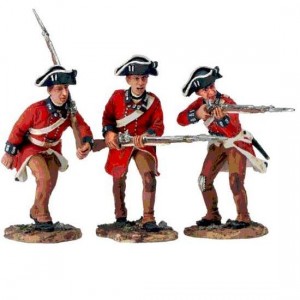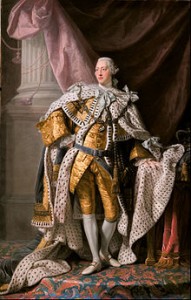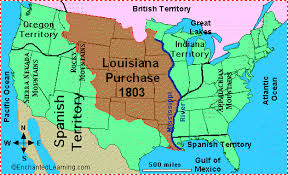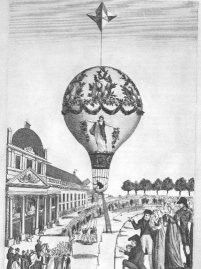by Charisse Howard
 Hard to believe it’s been well over 200 years since thirteen British colonies agreed to “dissolve the political bands which have connected them with another, and to assume among the powers of the earth [a] separate and equal station.”
Hard to believe it’s been well over 200 years since thirteen British colonies agreed to “dissolve the political bands which have connected them with another, and to assume among the powers of the earth [a] separate and equal station.”
Leading the way, and supplying the newly United States with four of its first five presidents, was the Commonwealth of Virginia. Ironic, since this colony was named for Elizabeth I, England’s “virgin queen.” The Declaration of Independence penned by Virginia planter Thomas Jefferson was carried out by his neighbor General George Washington. As president of the new nation, Washington was succeeded by New Englander John Adams, followed by Jefferson and then two more Virginians, James Madison and James Monroe.

The British king who lost this valuable chunk of real estate was George III. While the American states struggled to form a viable union, King George struggled with mental problems. That battle too he lost. In 1811 his son (also George) took the reins as Prince Regent–launching the period we know as the Regency.
A farm similar to Washington’s Mount Vernon and Jefferson’s Monticello is the setting for my novel Dark Horseman; Mystery, Adventure, and Romance in Regency Virginia. The Ballards of Belmont, however, specialize in raising horses . . . which were not pets or a pastime in that era, but an essential source of transportation and labor.
King George III had more real-estate problems than just the American colonies. After they revolted, so did the people of France. The French overthrew their king, but soon found themselves ruled by Napoleon Bonaparte. Hungry to expand his empire, Napoleon decided to conquer Britain.
 This is how the United States annexed the Louisiana Territory: Napoleon sold it to the Americans in 1803 to pay for his planned conquest. President Jefferson was no empire-builder, but he recognized a good deal: $15 million to get France out of not just Louisiana and surrounding states, but large parts of what is now the midwest and Canada.
This is how the United States annexed the Louisiana Territory: Napoleon sold it to the Americans in 1803 to pay for his planned conquest. President Jefferson was no empire-builder, but he recognized a good deal: $15 million to get France out of not just Louisiana and surrounding states, but large parts of what is now the midwest and Canada.
The American takeover brought important changes in the Louisiana Territory. The clash between the still rather Puritanical culture in the United States and the French colonial culture in and around New Orleans affected everyone from priests to pirates. This is the chaotic moment when my Regency Rakes & Rebels romance Lady Barbara & the Buccaneer takes place.
 Napoleon tried every possible angle of attack on Britain: massing armies at French ports along the English Channel, building a National Flotilla of invasion barges, erecting a triumphal column, even appointing balloonist Sophie Blanchard to help with an air assault. His hopes died in 1805 when the British Royal Navy kicked French stern at the Battle of Trafalgar.
Napoleon tried every possible angle of attack on Britain: massing armies at French ports along the English Channel, building a National Flotilla of invasion barges, erecting a triumphal column, even appointing balloonist Sophie Blanchard to help with an air assault. His hopes died in 1805 when the British Royal Navy kicked French stern at the Battle of Trafalgar.
Part of Napoleon’s plan was to distract the British by attacking their North American possessions. Britain still hadn’t entirely accepted losing its mainland colonies to the United States, and kept a death grip on its share of Canada, Bermuda, and the West Indies. So determined were the British not to cede any more turf–but to get back some, if possible–that they cosied up to their longtime enemy Spain, which still held West Florida. At the time Lady Barbara & the Buccaneer takes place, in early 1814, Britain was moving its North American forces from Halifax (Canada) to Bermuda, and lobbying to share the Spanish HQ at Pensacola.
 Piracy had been rife in the Caribbean Sea and Gulf of Mexico some 200 years earlier, since the first treasure ships started hauling booty back to Europe which the colonizers had plundered in the New World. The “Pirates of the Caribbean” era died out when the nations of Europe got tired of having their ships captured by each other. Collectively they agreed to quit issuing the lettres de marque under which pirates had claimed to act as agents for one or another government. But the treasure ships didn’t stop sailing; and as alliances changed, along with local economic circumstances, a new kind of piracy emerged.
Piracy had been rife in the Caribbean Sea and Gulf of Mexico some 200 years earlier, since the first treasure ships started hauling booty back to Europe which the colonizers had plundered in the New World. The “Pirates of the Caribbean” era died out when the nations of Europe got tired of having their ships captured by each other. Collectively they agreed to quit issuing the lettres de marque under which pirates had claimed to act as agents for one or another government. But the treasure ships didn’t stop sailing; and as alliances changed, along with local economic circumstances, a new kind of piracy emerged. 
Jean Laffite and his brother Pierre headed a buccaneering operation centered at New Orleans. They themselves weren’t so much pillage-and-burn pirates as rogue merchants. The islands of Barataria Bay made an ideal hiding place for ships to smuggle in goods; and when the city of New Orleans got too hot for them, the Laffites established the offshore island of Grand Terre as their central market. This map from William C. Davis’s excellent book The Pirates Laffite shows where the Regency-era buccaneers plied their trade. It’s here that Lady Barbara goes to celebrate Carnival (the Puritanical Americans having outlawed Mardi Gras) and finds more adventures than she bargained for.

